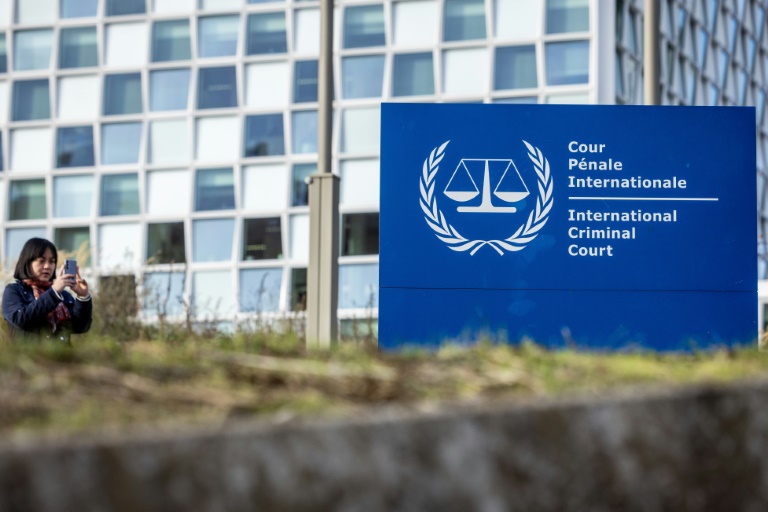A white bicycle, accompanied by flowers and candles, sits on a patch of grass on the Holly Street overpass above busy Highway 101 in San Carlos. The memorial was set up on a rainy Thursday afternoon by more than a dozen cyclists from across the Peninsula to honor Andrea Vallebueno.
The 31-year-old Stanford researcher was tragically killed while riding her bicycle near the site on a Saturday morning last month, crossing what is known in the neighborhood as a dangerous area for both cyclists and pedestrians.
Tim Ryan, a bicycle safety instructor and community advocate, spoke to the cyclists who had gathered to honor Vallebueno’s life. According to Vallebueno’s Stanford profile, she was a data scientist at the university’s Regulation, Evaluation and Governance Lab.
“Andréa’s family in Mexico City is about to celebrate Christmas without her,” Ryan said. “She was working on issues of poverty in Mexico. We can’t afford to lose people like her. We need to find a solution.”
Since her death, Ryan has been urging the city of San Carlos to prioritize pedestrian safety and prevent similar accidents in the future.
The bike lane where Vallebueno was killed is narrow, and briefly merges with a busy lane for vehicles entering and exiting Highway 101, creating a dangerous situation for both cyclists and pedestrians.
The cycling community has long urged transportation officials to build a pedestrian bridge in the area.
“Action is possible — we can build this bridge,” Ryan said.
Data from UC Berkeley shows that between 2018 and 2023, at least eight cyclists were severely injured and three pedestrians were killed in San Carlos, a city of about 29,000 people, due to vehicle crashes. Overall, 49 cyclists and 42 pedestrians were injured during that period.
The risks faced by cyclists and pedestrians in San Carlos reflect the broader dangers in the Bay Area. Last July, 29-year-old Linda Woolridge was killed by a suspected drunk driver in Antioch near Deer Valley High School while out buying popsicles for her family on a hot summer night. In September, a 60-year-old cyclist in Newark was struck and killed by a driver turning into a driveway at around 8:30 a.m.
“Cyclists are still not taken seriously as a means of transportation in the Bay Area,” said Amie Ashton, board president of the Silicon Valley Bicycle Coalition. “The majority of residents say they would bike more, but they simply do not feel safe.”
Cyclists in the community point to challenges in convincing local leaders to prioritize safety and redesign infrastructure with cyclist and pedestrian needs in mind.
New San Carlos Mayor Sara McDowell expressed condolences over Vallebueno’s death and pledged to address bicycle and pedestrian safety in the city.
“The city is collaborating with the San Mateo County Transit Authority to find both short- and long-term solutions to improve safety along the US 101/Holly Street overpass,” McDowell said in an email.
McDowell added that the city plans to hold a “listening session” next month.
“We will draw on the expertise of our bicycle and pedestrian community and hear their suggestions for improving safety,” she said.
Isabella Chu, a public health and road policy expert at Stanford University and newly elected Redwood City Council member, said she was devastated by Vallebueno’s death.
“I was angry and sad. I think this was predictable and preventable, as are most road deaths, particularly for people on bicycles or foot,” Chu said.
Chu, who uses her bike as her primary mode of transportation, advocates for safer conditions to encourage more people to cycle.
She emphasized that local policy should focus on recalibrating vehicle speed limits and redesigning infrastructure to prioritize the safety of non-motorized transportation and pedestrians.
“I prefer a data-driven approach, where we analyze areas with higher rates of collisions and injury crashes, focusing on the parts of town most affected,” Chu said. “Installing bike lanes is important, but they must be properly connected.”
David Pollack of Menlo Park, who was severely injured in a cycling crash in October near the Menlo Park and Atherton border, knows firsthand how devastating such accidents can be.
Pollack has been unable to return to his job at Sequoia Union High School District since being hospitalized after the crash.
“I hit my leg, and then my body ended up on the hood and heading toward the windshield,” Pollack said. Due to his injuries, he said, “it feels like my leg is being hit with a baseball bat.”
Despite the trauma of the crash, Pollack is determined to return to cycling once he’s recovered.
“I still believe in it. … I’m going to push myself to recover. I still prefer riding a bike or walking over getting in a car for short trips,” he said.
The Silicon Valley Bicycle Coalition said it will continue working with local government to improve safety conditions.
“Cities can make simple, inexpensive changes, such as narrowing road widths,” Ashton said. “Data shows that speed is a major factor in fatal crashes, so narrowing lanes benefits drivers, cyclists and pedestrians alike.
“We don’t necessarily need to build complex protected infrastructure right away. There are many cost-effective changes we can make by reprioritizing our work. Cities like Chicago and Portland have seen significant increases in cycling due to a focus on infrastructure. I truly believe that if you build it, they will come.”







